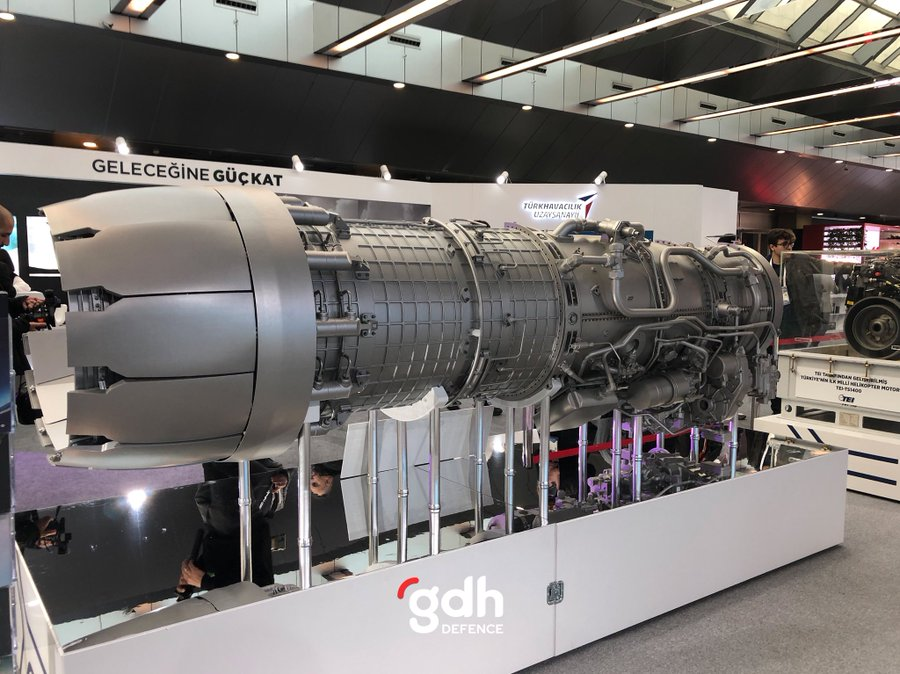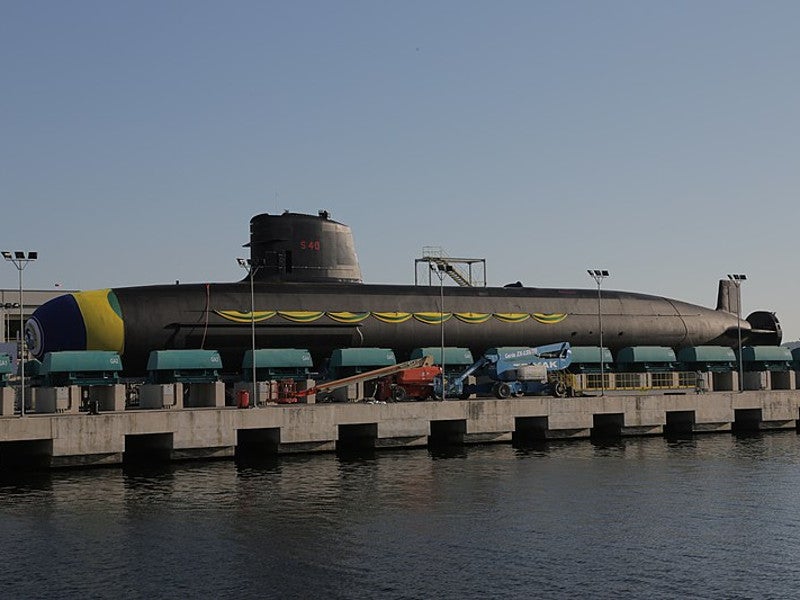AFI
SOURCE: AFI


In a move that underscores the growing defence cooperation between Sri Lanka and India, Sri Lanka’s State Minister of Defence, Pramitha Tennakoon, has revealed that the island nation is engaged in discussions with India to set up a small-arms manufacturing facility in Sri Lanka. While specific details regarding the project remain scarce, the announcement points to a potential new chapter in bilateral relations, particularly in the realm of defence production and self-reliance. The statement comes on the heels of a successful exhibition of Indian defence industry products in Colombo last month, highlighting India’s increasing role as a trusted partner in Sri Lanka’s security framework.
The talks for a small-arms manufacturing facility reflect a broader trend of deepening ties between Sri Lanka and India, driven by shared security concerns in the Indian Ocean region. As both nations navigate a complex geopolitical landscape, marked by the growing influence of external powers and the need to secure maritime trade routes, collaboration in defence production offers a pragmatic avenue for mutual benefit. For Sri Lanka, establishing a domestic manufacturing unit for small arms could reduce reliance on imports, enhance its military’s operational readiness, and create opportunities for local employment and skill development.
Continue readingSOURCE: AFI


In a significant development for India’s defence logistics sector, SML ISUZU Limited, a leading manufacturer of commercial vehicles, has bagged a prestigious order from the Indian Air Force (IAF) for the supply of BS VI-compliant, 4-Wheel Drive (4WD) Troop Carriers. The contract, valued at ?24.71 crores, involves the delivery of 114 units and was announced by the company in a regulatory filing to the stock exchanges on March 12, 2025. This order underscores SML ISUZU’s growing role in supporting India’s defence forces with reliable and advanced mobility solutions.
The order was awarded by the Department of Military Affairs under the Ministry of Defence through a competitive tender process conducted via the Government e-Marketplace (GeM) portal, a platform designed to ensure transparency and efficiency in government procurement. As per the terms of the contract, SML ISUZU will supply 114 troop carriers, each with a seating capacity of 20 personnel, tailored to meet the operational needs of the Indian Air Force.
Continue readingSOURCE: AFI


The United States has released projections indicating a significant escalation in China’s nuclear weapons stockpile, estimating it at around 600 warheads in 2025, with a potential rise to 1,000 by 2030 and 1,500 by 2035. These figures underscore China’s rapid nuclear expansion, driven by modernization efforts and a strategic push to assert greater global influence.
Meanwhile, India’s nuclear stockpile remains modest at an estimated 172 warheads, with yields significantly lower than those of China’s arsenal. This disparity raises critical questions about India’s deterrence capabilities, particularly its second-strike posture, and the need for a strategic reassessment to maintain credible deterrence in an increasingly volatile region.
Continue readingSOURCE: AFI


The global race to develop advanced fighter jets and their corresponding propulsion systems has intensified, with Turkey and South Korea taking significant strides in their respective programs. Turkey has reportedly committed $3-5 billion to the development of the TF-35000 engine for its ambitious Kaan fighter jet, while South Korea is investing $2.3 billion in an indigenous engine for its KF-21 Boramae program.
Both nations are positioning themselves as formidable players in the aerospace industry, particularly in the realm of fifth-generation fighter jets. Meanwhile, India, despite its own aspirations for a homegrown fifth-generation jet engine, appears to lag behind as it grapples with indecision over partnerships and funding for its program.
Continue readingSOURCE: AFI


In a significant step towards deepening defence ties between India and Brazil, General Heraldo Luiz Rodrigues, Secretary of Defence Products (SEPROD) of Brazil, recently concluded an important visit to India. The discussions, held in New Delhi with top officials from the Ministry of Defence and representatives of the three armed services, underscored a shared commitment to fostering a robust partnership that transcends traditional buyer-seller dynamics. The talks covered a wide spectrum of areas, including submarine maintenance, missile systems, and broader technological collaboration, setting the stage for a transformative phase in Indo-Brazilian defence relations.
At the heart of this burgeoning partnership is an upcoming Memorandum of Understanding (MoU) on submarine Maintenance, Repair, and Overhaul (MRO), slated to be signed next month. This agreement is poised to be a game-changer for India’s naval defence capabilities, particularly in the realm of self-reliance. The MoU will enable India to maintain its fleet of Scorpène-class submarines—built under the Kalvari-class program—locally, reducing dependence on foreign expertise and cutting down turnaround times for repairs and maintenance.
Continue readingSOURCE: AFI


A board showcasing a comprehensive list of mobile applications banned for use by Indian Army personnel has gone viral, sparking widespread discussion online. The list, titled “MOBILE APPS BANNED IN INDIAN ARMY,” highlights apps deemed a security threat and includes specific guidelines for usage, marking the first time such a detailed classification has been publicly revealed.
The board, reportedly displayed at an army facility, categorizes banned apps across various genres—messaging platforms, e-commerce, dating apps, video hosting, social networking, gaming, and more—while emphasizing stringent rules to safeguard sensitive information.
Continue readingSOURCE: AFI


India’s recent unveiling of its Gallium Nitride (GaN)-based Active Electronically Scanned Array (AESA) radar for the Advanced Medium Combat Aircraft (AMCA) and the Super Sukhoi upgrade program has ignited a fresh debate within defence circles. The indigenous radar, developed by the Defence Research and Development Organisation (DRDO), represents a leap forward in India’s self-reliance in critical military technologies.
However, its emergence has raised questions about why India isn’t leveraging this cutting-edge radar and mission computers to upgrade its fleet of 36 Rafale fighter jets, which currently rely on Gallium Arsenide (GaS)-based AESA radars and foreign avionics. Such an upgrade could potentially eliminate the need for French approvals for integrating more Indian weapons systems, but intellectual property rights (IPR) and geopolitical realities present significant hurdles.
Continue readingSOURCE: AFI


In a significant boost to India’s indigenous defense manufacturing sector, SSS Defence, a Bengaluru-based private firm, has secured a landmark contract with the Uttar Pradesh Police for its newly developed Manohar72 (M72) carbine. Priced at an impressive 93,000 INR per unit (including GST), the M72 not only underscores SSS Defence’s commitment to affordability but also positions it as a cost-effective alternative to both domestic and imported small arms systems. This achievement also resonates with the legacy of Manohar Parrikar, one of India’s most revered Defence Ministers, whose vision of self-reliance in defense continues to inspire innovations like the M72.
The Manohar72, or M72, is a 5.56x45mm NATO carbine designed by SSS Defence to meet the demanding requirements of modern law enforcement and military operations. Tailored for close-quarters battle (CQB), the M72 combines modularity, reliability, and affordability, making it a versatile weapon for urban and rural security scenarios. Its design draws inspiration from advanced Western platforms while being optimized for Indian operational needs, showcasing the ingenuity of India’s private defense sector.
Continue readingSOURCE: AFI


In a significant stride towards bolstering India’s nuclear energy capabilities, the “concept design” stage of the Bharat Small Modular Reactor (BSMR) has been successfully completed and is now awaiting approval, Union Minister of State for Science & Technology Dr. Jitendra Singh informed the Lok Sabha. This milestone marks a pivotal moment in India’s pursuit of sustainable, indigenous nuclear power solutions, aligning with the nation’s ambitious goals for energy security and carbon neutrality. Once sanctioned, the BSMR project is expected to take 60-72 months for construction, paving the way for a new era of compact, efficient nuclear reactors tailored to India’s unique needs.
The Bharat Small Modular Reactor is an evolution of India’s existing 200 MWe Pressurised Heavy Water Reactor (PHWR), a proven design that forms the backbone of the country’s nuclear power program. Developed through a collaborative effort between the Bhabha Atomic Research Centre (BARC) and the Nuclear Power Corporation of India Limited (NPCIL), the BSMR aims to adapt the PHWR platform into a smaller, modular configuration without compromising on safety or efficiency.
Continue readingSOURCE: AFI


In a significant step towards enhancing its operational capabilities in challenging high-altitude environments, the Indian Army has deployed the Vehicle Mounted Infantry Mortar System (VMIMS) in Sikkim, a strategically critical region along India’s border with China. This deployment underscores India’s commitment to strengthening its defense preparedness while advancing the nation’s self-reliance in defense manufacturing under the ‘Atmanirbhar Bharat’ and ‘Make in India’ initiatives.
The VMIMS, a product of Indian ingenuity and collaboration, comprises the Alakran-L automated, deployable mortar system fitted with an 81 mm barrel. This advanced system is mounted onto the rear of a 4×4 Armoured Light Specialist Vehicle (ALSV), known as ‘Armado’ in Indian service, built by Mahindra Defence Systems Limited (MDSL). The integration of the Alakran-L mortar with the Armado platform provides the Indian Army with enhanced mobility, rapid response capabilities, and increased firepower—key attributes for operations in rugged, high-altitude terrains like Sikkim.
Continue readingSOURCE: AFI


Recent reports have spotlighted China’s development of interconnected jack-up barges, dubbed “invasion barges” by some analysts, as a potential tool for amphibious operations, particularly in the context of a possible invasion of Taiwan. These barges, designed to form temporary piers by linking together with jack-up supports for stability, could theoretically enable the People’s Liberation Army Navy (PLAN) to offload troops, tanks, and supplies onto Taiwan’s shores with greater speed and flexibility. However, while this innovation might appear to enhance China’s military capabilities on paper, there are significant reasons to question whether these barges would succeed—or fail spectacularly—in a real-world conflict scenario.
The interconnected jack-up barges are a novel design, reportedly under construction at facilities like the Guangzhou Shipyard International (GSI). These vessels are equipped with long ramps or bridges—some extending over 120 meters—and stabilizing jack-up legs that anchor them to the seabed. In theory, they could form a makeshift pier, connecting larger ships (including civilian roll-on/roll-off ferries often used by the PLAN) to the shore, even in areas lacking traditional port infrastructure. This would allow China to bypass heavily defended Taiwanese ports or beaches, landing forces at less fortified coastal sites, such as rocky shores or mudflats.
Continue readingSOURCE: AFI


In a candid address at a recent defense conclave in New Delhi, the Chief of the Indian Air Force (IAF), Air Chief Marshal AP Singh, admitted that last-minute changes in armament and other specifications requested by the IAF may have contributed to delays in the Light Combat Aircraft (LCA) Tejas program. However, he also rationalized these alterations, arguing that the prolonged development timeline of the jet necessitated updates to ensure it remains equipped with the latest hardware and weaponry, aligning with contemporary operational requirements and technological advancements.
The LCA Tejas, developed by Hindustan Aeronautics Limited (HAL) in collaboration with the Aeronautical Development Agency (ADA), was conceived in the 1980s as a lightweight, multirole fighter to replace the IAF’s ageing fleet of MiG-21s. Despite achieving Initial Operational Clearance (IOC) in 2015 and Final Operational Clearance (FOC) in 2019 for the Mk1 variant, the program has faced criticism for significant delays, cost overruns, and production bottlenecks.
Continue readingSOURCE: AFI


Air Commodore Nouman Ali Khan, a decorated officer of the Pakistan Air Force (PAF) who gained prominence for shooting down an Indian MiG-21 Bison while piloting an F-16 during the 2019 aerial skirmish, recently made headlines with pointed remarks about India’s Light Combat Aircraft (LCA) Tejas program.
Khan, speaking at a defense seminar in Islamabad, took a dig at the Tejas, questioning its operational status and mocking its absence near India’s frontline bases along the international border. In contrast, he lavished praise on the Sino-Pakistani JF-17 Thunder Block-III jets, asserting their superiority over even the upgraded F-16 (MLU-20) and highlighting their active role in multiple combat operations.
Continue readingSOURCE: AFI


In a significant update to its industrial plan on 11 March, Leonardo, one of the key partners in the three-nation Global Combat Air Programme (GCAP), revealed a first-order estimate for the ambitious sixth-generation fighter jet program. The company disclosed that a total of 350 platform orders are expected for the joint venture by 2035, signaling strong confidence in the program’s future.
The GCAP, a collaborative effort between Italy, Japan, and the UK, aims to replace aging fourth- and fifth-generation fighters in the fleets of their respective air forces. An analysis of the current combat aircraft inventories of these nations suggests that Japan’s Air Self-Defense Force (JASDF) is likely to emerge as the largest operator of the new platform, driven by its substantial fleet replacement needs.
Continue readingSOURCE: AFI


In a landmark achievement for India’s indigenous defense technology, the Aerial Delivery Research and Development Establishment (ADRDE) in Agra has successfully demonstrated the capabilities of its Military Combat Parachute System (MCPS) with a combat freefall jump from an altitude of 27,000 feet.
Carried out with a full combat load, this jump marks the MCPS as the only parachute system currently in use by the Indian Armed Forces capable of deployment above 25,000 feet. The successful trial, executed by Wing Commander Vishal Lakhesh VM(G), Master Warrant Officer R J Singh, and Master Warrant Officer A A Baidya, underscores the system’s reliability and advanced features, positioning it as a game-changer for high-altitude airborne operations.
Continue reading